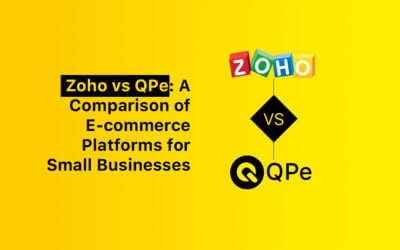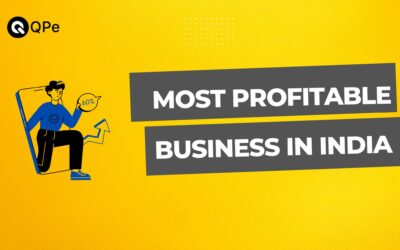Starting an e-commerce business without financial investment might seem impossible. But it is achievable. In 2024, many small businesses continue to rely on non-traditional funding sources for launching.
- About 77% of new entrepreneurs use personal savings or non-institutional loans
- Nearly 60% of startups began with less than $25,000 in capital
- Around a third managed with as little as $5,000.
And it was all done by leveraging digital platforms and tools. In this article, we will help you turn your business ideas into a successful online business without breaking the bank!
That too with QPE “Making E-Commerce Affordable & Accessible for Everyone” by…
— Helping launch an e-commerce store with the least investment and no coding skills.
— QPe simplify the setup, letting you customize products and go live faster
TL;DR – How to Start an E-Commerce Business Without Money
In a hurry? These are the steps to start an e-commerce business without money:
- Find out your Niche
- Create a Strong Business Plan
- Create a Unique Brand Name and Trademark it
- Create an Online Store for your E-commerce Business
- Market your Business via Social Media and Web Marketing
- Consider Drop-shipping or Print on Demand
- Promise a Great Customer Service
- Use Tools to Monitor the Business Real Time
- Take Feedback and Modify Strategies on the go
- Look for Funding Options for Future Growth
Are There Enough E-commerce Business Opportunities Left?
Absolutely! As the global e-commerce market is projected to grow from $5.7 trillion in 2022 to $8.1 trillion by 2026. This growth highlights the ongoing demand for diverse e-commerce products and innovative solutions.
4 E-Commerce Business Ideas When You Have No Money
Whether you want to sell services online or dive into selling products, you can build a successful business with nothing more than your ideas, drive, and internet access. Forget the usual business costs. Let’s explore how to get going with zero dollars.
Handcrafted Goods
Selling handcrafted goods can be a great way to start a business, even with little money. And with QPe, setting up your e-commerce store is quick and easy. Just follow these simple steps:

- Create a QPe account.
- Customize your storefront and choose product categories.
- Upload Photos of each handcrafted item.
- Set the Pricing of your goods and set shipping options.
- Launch your store and share the link with customers.
Dropshipping
You sell products without keeping any stock yourself. Set up an online store, and your suppliers will handle the storage, packaging, and shipping. All you need to focus on is marketing and keeping your customers happy.
Print On Demand
It’s a lot like dropshipping but with custom products like shirts, mugs, or phone cases. You come up with the designs. A third-party company prints them on products and ships them to your buyers.
Digital Products
These include eBooks, courses, templates, or art. You don’t have to worry about inventory or shipping. Once you make it, you can sell it over and over with almost zero overhead.
How To Start An E-Commerce Business Without Money – 10 Step Process
Frequently Asked Questions:
What Are The Best Free Platforms To Sell Online?
If you’re searching for a low-cost platform to sell online, QPe is a smart option. While it’s not entirely free, it’s super affordable compared to many others. QPe gives you the tools to reach both local and international customers with ease.
It’s especially useful if you want to sell a range of products without dealing with big fees. The best part? The platform is simple to use, even if you’re just starting and don’t have much cash to spend. Ideal for budget-conscious sellers who need a reliable and user-friendly solution.
How Do I Market My E-commerce Business With No Budget?
What are the Key Challenges of Starting an E-Commerce Business for Free?
Starting an e-commerce business for free brings a lot of challenges. Here’s a look at some of them:
- Time Crunch: You take on several roles. For example, when you launch a subscription box for gourmet snacks, you handle sales, marketing, customer service, and order fulfillment. It feels overwhelming.
- Low Brand Visibility: Getting noticed with no budget is tough. When you sell custom phone cases, you compete with bigger brands. Without money for ads, reaching new customers becomes a struggle.
- Shipping and Logistics: Managing shipping can drain your profits. Selling handcrafted candles works fine with print-on-demand, but affordable shipping eats away at your earnings. It slows down deliveries too.
- Inventory Problems: With little to no cash, you can’t invest in a wide range of products. This limits the items you offer and the control you have over inventory.
- Customer Base Growth: Running a drop-shipping store for vintage crockery forces you to rely on social media and word-of-mouth. Building a solid base this way takes a lot of time and effort.
- Website Design Issues: Free website builders often lack flexibility. You won’t get the design options you need. If the site looks bad, customers may leave before exploring your products.
- Customer Service Struggles: When you operate a print-on-demand store for custom apparel, you deal with customer inquiries on your own. Without trained staff, responding fast becomes nearly impossible.
- Tough Competition: Competing with established brands makes it hard to succeed. Let’s say you launch a digital marketplace for eco-friendly products. Larger competitors have better marketing and customer service.
Each of these obstacles makes starting an e-commerce business without money tough. But knowing the hurdles helps you plan better solutions.
Which is the Easiest E-Commerce Business to Start?
The easiest e-commerce business to start really depends on what you enjoy and what people want. There’s no one answer for everyone. If you love fashion, starting an online clothing shop might feel like a breeze. But if fitness is your thing, selling health products or activewear could come more naturally.
Also, think about what’s in demand. Niches like eco-friendly products, digital goods, or dropshipping often have lower start-up costs and fit what people are looking for these days. Bottom line? Go with a business idea that matches both your passion and what the market wants. You’ll have a better shot at success that way.



